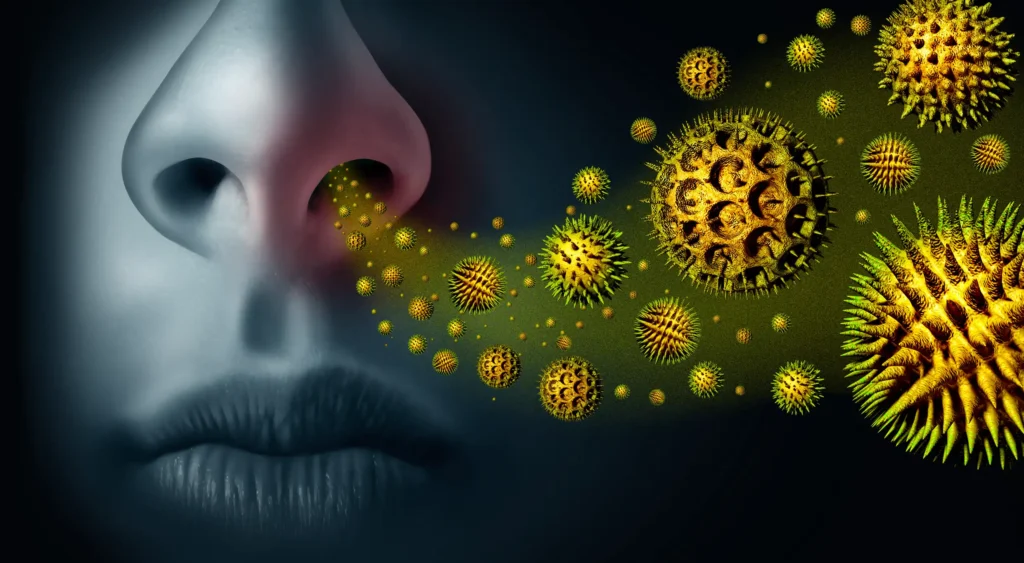Air Treatment for Domestic Use
Main sources of indoor pollution
According to the Ministry of Health, substances that can alter indoor air quality can be classified as: chemical, physical and biological agents; they come partly from outside (pollution, particulate matter, atmospheric dust, pollen..), but many are produced from indoor sources.
The main indoor sources of pollution are: occupants (humans, animals), dust (an excellent receptacle for microorganisms), structures, building materials, furnishings, equipment (air conditioners, humidifiers, plumbing).


Table: Main indoor agents and potential indoor sources
| SOURCES | POLLUTANTS |
|---|---|
| Gas or coal combustion processes for heating and/or cooking, wood-burning fireplaces and stoves, vehicle exhaust | Combustion products *CO, NOx, SO2, particulate matter |
| Building materials and insulation | Asbestos, man-made glass fibers, Particulate matter, Radon; Biological agents (due to the presence of moisture and/or dust |
| Upholstery materials and carpeting | Formaldehyde, acrylates, VOCs, and Biological agents (due to the presence of moisture and/or dust). |
| Furniture | Formaldehyde, VOCs and Biological agents (due to the presence of moisture and/or dust). |
| Cleaning liquids and products | alcohols, phenols, VOCs |
| Photocopiers | ozone (O3), toner dust, volatile hydrocarbons (VOCs). |
| Cigarette smoking | Polycyclic hydrocarbons, VOC formaldehyde, CO, fine particulate matter. |
| Air conditioning systems | CO2 and VOCs (due to poor hourly turnover or excessive recycling); Biological agents (due to lack of cleaning/maintenance) |
| Powder | Biological agents (indoor allergens> mites) |
| Individuals | CO2 and Biological agents (bacteria, viruses, etc.). |
| Animals | Indoor allergens (hairs, etc.) |
| Natural sources (lavas, tuffs, granites, etc.). | Radon |
Generally, as the number of people in a confined environment increases and in the absence of adequate ventilation, the dissatisfaction of occupants increases due to the progressive deterioration of air quality (stale air), which may be perceived as more or less unpleasant due to the increased concentration of bioeffluents.
Carbon dioxide (CO2), the main metabolic gas produced by humans, is used as an indicator of indoor air quality. People are also sources of biological contaminants through the desquamation of the epidermis and, most importantly, the emission of saliva droplets: the “Flügge droplets” released into the environment through phonation, coughing or sneezing. These are able to remain suspended in the air and carry infectious agents of numerous diseases. Also Pets are sources of biological pollution through shedding of hair, dander, saliva, urine etc.
Carbon dioxide (CO2), the main metabolic gas produced by humans, is used as an indicator of indoor air quality. People are also sources of biological contaminants through the desquamation of the epidermis and, most importantly, the emission of saliva droplets: the “Flügge droplets” released into the environment through phonation, coughing or sneezing. These are able to remain suspended in the air and carry infectious agents of numerous diseases. Also Pets are sources of biological pollution through shedding of hair, dander, saliva, urine etc.
Occupant activities
Combustion processes
Many occupants’ activities contribute to indoor air pollution. One of the main factors is passive tobacco SMOKE (ETS), in addition to the combustion processes of oil, gas, kerosene, coal and wood.
Analytical chemistry research has shown that secondhand tobacco smoke (ETS) contributes to indoor pollution as it contributes significant concentrations of nicotine, irritants, toxic substances and carcinogens.
Combustion processes for COOKING FOOD and HEATING rooms contribute to increased concentrations of Nitrogen Oxide and Nitrogen Dioxide (NO and NO2), carbon dioxide (CO2) and carbon monoxide (CO). Recently, there has been increased interest in the scientific community in indoor pollution phenomena related to biomass combustion, especially with the increased use of wood stoves and fireplaces. Emissions of hazardous chemical pollutants result from this type of combustion, such as: Carbon Monoxide (CO), Volatile Organic Compounds (VOCs), Fine Carbonaceous Particulate Matter (soot) and Polycyclic Aromatic Hydrocarbons (PAHs ). Other potential indoor sources of pollution include household cleaning and maintenance products, pesticide products, and the use of glues, adhesives, solvents etc. In addition, the use of work tools such as printers, plotters, and photocopiers can result in significant emission of pollutants.
Combustion processes for COOKING FOOD and HEATING rooms contribute to increased concentrations of Nitrogen Oxide and Nitrogen Dioxide (NO and NO2), carbon dioxide (CO2) and carbon monoxide (CO). Recently, there has been increased interest in the scientific community in indoor pollution phenomena related to biomass combustion, especially with the increased use of wood stoves and fireplaces. Emissions of hazardous chemical pollutants result from this type of combustion, such as: Carbon Monoxide (CO), Volatile Organic Compounds (VOCs), Fine Carbonaceous Particulate Matter (soot) and Polycyclic Aromatic Hydrocarbons (PAHs ). Other potential indoor sources of pollution include household cleaning and maintenance products, pesticide products, and the use of glues, adhesives, solvents etc. In addition, the use of work tools such as printers, plotters, and photocopiers can result in significant emission of pollutants.



